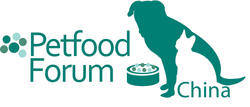
Despite the ongoing political tensions between the United States and China, negotiators hammered out an agreement that opened the Chinese dog, cat and other pet food markets to more U.S.-made products. Their ability to strike a deal bodes well for future pet product trade between the two economic superpowers, Peter Tabor, vice president of regulatory and international affairs for the Pet Food Institute, said in a video interview with Petfood Industry. After U.S. and Chinese envoys reached consensus, U.S. Department of Agriculture’s Animal and Plant Health Inspection Service agents developed a protocol for exporting U.S. pet foods to China, which went into effect on June 15.
“I think the best way to kind of gauge what might happen is just to look at what has happened since the agreement was signed,” Tabor said. “It was signed in mid-January, and entered into force in mid-February. From a pet food standpoint, the agreement stipulated that the two sides had 60 days to reach agreement on the protocol. And they met that deadline. They had it done in mid-April. Then it was a question of aphis transcribing that into language that we now see on that APHIS IReg page that you referenced. So all of this happening, meeting these deadlines, during a pandemic with some political tension, I think it bodes well. It’s a testament to the efforts of the negotiators, and I think it also portends well for us in pet food that we have this opportunity now and can start taking steps to export to China despite what has been going on.”
The APHIS protocol facilitates the export of U.S. pet foods containing ingredients made from ruminants. The protocol includes provisions on how to safely continue utilizing poultry products in pet food in the event of an avian influenza or Newcastle disease outbreak. The trade agreement also removes procedural barriers, such as facility questionnaires and audits.
In an earlier video (3 steps to export US pet food to China after Phase One), Tabor outlined three steps that U.S.-based pet food companies can start on immediately, if they wish to export pet food to China.
- Review the trade agreement and the APHIS protocol
- Schedule an APHIS inspection and get approved
- Begin product registration process in China
He recommended that pet food companies act now if they wish to export to China, as the registration process likely will still take months. There may be a steep learning curve on the first few products, but should be much smoother than previously once companies get the hang of it.
Euromonitor estimated that sales of dog and cat kibble in China will reach US$2.7 billion and US$1.3 billion, respectively, in 2022, Petfood Industry’s Alma Buelva reported. Wet dog food may hit US$841 million in sales by 2022, with US$705 million spent on wet cat food in China. According to Euromonitor, China’s pet population has increased by a 7% compound annual growth rate (CAGR) from 2013 to 2017, from 389 million pets to 510 million. It added that the pet population explosion will continue from 2018 to 2022, from 551 million to 755 million at 8.2% CAGR. By that time, China’s population will be plateauing at an estimated 1.411 billion, but the pets’ number will still be rising.

